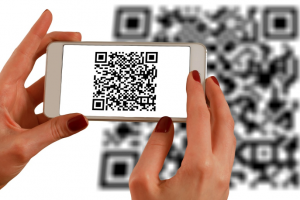 Earlier this year, comScore, a media analytics company, released its annual report on cross-platform media usage. The results revealed that desktop usage had dropped below 2013 levels of usage, accounting for only 35 percent of time spent with digital media. Smart phones, on the other hand, and mobile apps in particular, represent 54 percent. Not surprisingly, the most shrewd and clear-sighted CIOs nowadays consider business apps an opportunity for driving innovation, professional development, and company advancement.
Earlier this year, comScore, a media analytics company, released its annual report on cross-platform media usage. The results revealed that desktop usage had dropped below 2013 levels of usage, accounting for only 35 percent of time spent with digital media. Smart phones, on the other hand, and mobile apps in particular, represent 54 percent. Not surprisingly, the most shrewd and clear-sighted CIOs nowadays consider business apps an opportunity for driving innovation, professional development, and company advancement.
Today’s Market Requires Rapid App Development
Today mobile app business needs light and agile apps, designed to perform a limited number of specific functions and customized for a particular user. Such apps need to be developed on demand and delivered within days or even hours. That is why RMAD (Rapid Mobile App Development) approach was born and has been gaining momentum in recent years. A number of IT companies now offer their approaches to rapid mobile app development. Thus, for instance, Salesforce, an American cloud computing company, is planning to offer its customers a platform service enabling everyone to build apps using simplified tools. The solution will have opened in the San Francisco Bay Area by the end of 2016.
Start Building Killer Mobile Apps Today
Naturally, rapid app development solutions range from complicated and difficult to get a grasp of to extremely intuitive and user-friendly. Snappii, a leading company of mobile business solutions, understands that few people nowadays have got days to learn nuts and bolts of a highly sophisticated platform and has recently released its Express Mode of Snappii’s rapid WYSYWYG editor. Now Snappii offers over 300 ready-made templates for any industry or occupation and allows anyone to easily and conveniently customize them within minutes and at a fraction of the cost. Moreover, Snappii presents a powerful White Label solution for novice app creation companies and allows them to become its partners. In addition, Snappii takes pride for its experience and excellent customer support. So don’t wait! Start building mobile apps today!

 Login
Login

 “The average iPhone owner in the US spent $35 on apps last year,” according to Sensor Tower, an app marketing company. Developer Economics survey has shown that “43% of enterprise app developers make more than $10K per month”. When you read the success stories of such app developing companies as Seriously, Grail, Evernote and Smule, you realize that everyone can build a unique mobile app which thousands of app users will rave about. You don’t have a large team or budget to start off. Thus, for instance, Seriously launched Best Friends with only 11 people and a very small marketing budget. The company behind the phenomenal CARROT apps is even smaller: it is actually just one self-taught man, Brian Mueller.
“The average iPhone owner in the US spent $35 on apps last year,” according to Sensor Tower, an app marketing company. Developer Economics survey has shown that “43% of enterprise app developers make more than $10K per month”. When you read the success stories of such app developing companies as Seriously, Grail, Evernote and Smule, you realize that everyone can build a unique mobile app which thousands of app users will rave about. You don’t have a large team or budget to start off. Thus, for instance, Seriously launched Best Friends with only 11 people and a very small marketing budget. The company behind the phenomenal CARROT apps is even smaller: it is actually just one self-taught man, Brian Mueller. QR codes are two dimensional quick response codes that can be scanned by smartphone cameras to instantly pull up text, photos, videos, URLs, etc. Such codes can contain a huge amount of information, which makes them quite popular all over the world. Nowadays many businesses use QR codes as a means of marketing. “QR codes demonstrate just one of the ways in which mobile marketing can effectively be integrated into existing media and marketing campaigns to help reach desired consumer segments,” says Mark Donovan, the Chief Marketing Officer at comScore, Inc.
QR codes are two dimensional quick response codes that can be scanned by smartphone cameras to instantly pull up text, photos, videos, URLs, etc. Such codes can contain a huge amount of information, which makes them quite popular all over the world. Nowadays many businesses use QR codes as a means of marketing. “QR codes demonstrate just one of the ways in which mobile marketing can effectively be integrated into existing media and marketing campaigns to help reach desired consumer segments,” says Mark Donovan, the Chief Marketing Officer at comScore, Inc. A new study from
A new study from  In today’s world where everything is going mobile, more and more small and midsize businesses are adopting mobile apps thanks to the numerous benefits offered by quality business mobile apps. They know that apps expose them to the global customer, improve customer experience, and, therefore, promote customer loyalty. The latest data from Yahoo’s
In today’s world where everything is going mobile, more and more small and midsize businesses are adopting mobile apps thanks to the numerous benefits offered by quality business mobile apps. They know that apps expose them to the global customer, improve customer experience, and, therefore, promote customer loyalty. The latest data from Yahoo’s  It is hard to imagine an industry that doesn’t regularly deal with numerous paper forms such as invoices, inspections, or reports. In fact, according to the statistics, an average office worker uses staggering 10,000 sheets of copy paper a year. The U.S. companies spend over $120 billion a year on printed forms, which get outdated within a few months, while 45% of paper printed in office ends up trashed by the end of the day. Moreover, paper forms are bulky, inconvenient, and are prone to getting lost, especially when it comes to field work.
It is hard to imagine an industry that doesn’t regularly deal with numerous paper forms such as invoices, inspections, or reports. In fact, according to the statistics, an average office worker uses staggering 10,000 sheets of copy paper a year. The U.S. companies spend over $120 billion a year on printed forms, which get outdated within a few months, while 45% of paper printed in office ends up trashed by the end of the day. Moreover, paper forms are bulky, inconvenient, and are prone to getting lost, especially when it comes to field work. Every quarter it seems new data is released or new stats shared about the rapid migration of users to smartphones and mobile apps from desktops and the “web”. In 2014 the time spent in mobile apps surpassed time spent accessing the web from desktops. In 2015 Google announced more video is watched from mobile devices, more local search is conducted via mobile and even more web search comes from mobile than desktop.
Every quarter it seems new data is released or new stats shared about the rapid migration of users to smartphones and mobile apps from desktops and the “web”. In 2014 the time spent in mobile apps surpassed time spent accessing the web from desktops. In 2015 Google announced more video is watched from mobile devices, more local search is conducted via mobile and even more web search comes from mobile than desktop.

 “Mobility has become synonymous with productivity both inside and outside the workplace, and the mass adoption of mobile technology in the United States has cultivated an environment where workers expect to leverage mobile technology at work,” says Bryan Bassett, a research analyst at Mobile Enterprise Device Solutions at IDC. However, before implementing mobile business apps in the workforce, business owners should do their best to ensure this adoption happens painlessly and seamlessly for their employees. Below are a few strategies they might want to use.
“Mobility has become synonymous with productivity both inside and outside the workplace, and the mass adoption of mobile technology in the United States has cultivated an environment where workers expect to leverage mobile technology at work,” says Bryan Bassett, a research analyst at Mobile Enterprise Device Solutions at IDC. However, before implementing mobile business apps in the workforce, business owners should do their best to ensure this adoption happens painlessly and seamlessly for their employees. Below are a few strategies they might want to use. Nowadays we find ourselves using payment cards far more often than cash. Moreover, innovations in mobile commerce now offer mobile users such a convenient payment option as mobile payment apps. Research studies show that this trend is gaining momentum. “Nearly three-quarters (73%) of mobile banking customers use mobile payment apps to pay bills,” according to a new study from S&P Global Market Intelligence.
Nowadays we find ourselves using payment cards far more often than cash. Moreover, innovations in mobile commerce now offer mobile users such a convenient payment option as mobile payment apps. Research studies show that this trend is gaining momentum. “Nearly three-quarters (73%) of mobile banking customers use mobile payment apps to pay bills,” according to a new study from S&P Global Market Intelligence. Apple is back to making iPhones with 4-inch screens. Since the launch of iPhone 6 and iPhone 6Plus, there have been different rumors about Apple’s plans. Finally, on March 21st, Apple announced its plans to release its new iPhone 5SE (Special Edition), or simply “the iPhone SE”, which is available to pre-order in some countries from March 24.
Apple is back to making iPhones with 4-inch screens. Since the launch of iPhone 6 and iPhone 6Plus, there have been different rumors about Apple’s plans. Finally, on March 21st, Apple announced its plans to release its new iPhone 5SE (Special Edition), or simply “the iPhone SE”, which is available to pre-order in some countries from March 24.  Social media is not solely a means of entertainment. Numerous statistics showcase how powerful social media can be for businesses of all sizes. According to the Statista, “in 2016, 78% of US Americans have a social network profile, representing a 5% growth compared to the previous year. Also, as of 2015, daily social media usage of global internet users amounted to 106.2 minutes per day, up from 103.2 minutes in the previous year.” Badgeville’s infographic clearly illustrates that 63% of Millennials stay updated on brands through social networks. Add to these facts that most people have social media apps installed on their mobile devices, and the potential of social media becomes enormous.
Social media is not solely a means of entertainment. Numerous statistics showcase how powerful social media can be for businesses of all sizes. According to the Statista, “in 2016, 78% of US Americans have a social network profile, representing a 5% growth compared to the previous year. Also, as of 2015, daily social media usage of global internet users amounted to 106.2 minutes per day, up from 103.2 minutes in the previous year.” Badgeville’s infographic clearly illustrates that 63% of Millennials stay updated on brands through social networks. Add to these facts that most people have social media apps installed on their mobile devices, and the potential of social media becomes enormous. Mobile apps are now one of the leading tools enabling modern businesses to improve internal operations, venture into new markets and provide new revenue streams. That being said, the app development industry doesn’t stand still and regularly offers innovative business apps and enhanced processes for the creation of even more advanced enterprise apps.
Mobile apps are now one of the leading tools enabling modern businesses to improve internal operations, venture into new markets and provide new revenue streams. That being said, the app development industry doesn’t stand still and regularly offers innovative business apps and enhanced processes for the creation of even more advanced enterprise apps.